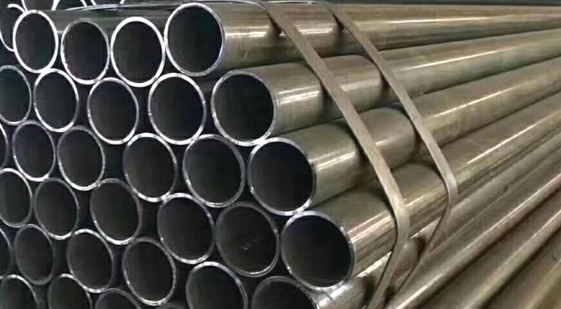
Chromium Plating and Nickel Plating for Seamless Steel Pipes
Seamless Steel Pipe begins as a solid cylindrical hunk of steel called a billet. While still hot, billets are pierced through the center with a mandrel. The next step is rolling and stretching the hollow billet. The billet is precisely rolled and stretched until it meets the length, diameter and wall thickness as specified by the customer order.
A seamless steel pipe is a type of pipe made from a solid round steel billet, which is heated and then pushed or pulled over a form until the steel is shaped into a hollow tube. Unlike welded pipes, seamless pipes do not have any seams or joints, making them stronger and more reliable under high pressure, high temperature, and corrosive environments.
Chrome plating of seamless steel pipes
Features: Chromium is very stable in humid atmosphere, alkali, nitric acid, sulfide, carbonate solutions and organic acids, and is easily soluble in hydrochloric acid and hot concentrated sulfuric acid. Under the action of direct current, if the chromium layer serves as an anode, it is easily soluble in caustic soda solution. The chromium layer has strong adhesion, high hardness, 800~1000V, good wear resistance, strong light reflectivity, and high heat resistance. It does not discolor below 480℃, starts to oxidize above 500℃, and the hardness drops significantly at 700℃.
Its disadvantages are that chromium is hard, brittle and easy to fall off, which is more obvious when subjected to alternating impact loads. Metal chromium is easily passivated in the air to form a passivation film, thus changing the potential of chromium. Therefore, chromium becomes a cathodic coating on iron.
Application: It is not ideal to directly plate chromium on the surface of steel parts as an anti-corrosion layer. Generally, multi-layer electroplating (i.e. copper plating → nickel → chromium) can be used to achieve the purpose of anti-rust and decoration. Currently widely used in improving the wear resistance of parts, repairing dimensions, light reflection and decorative lights.

Nickel plating of seamless steel pipes
Features: Nickel has good chemical stability in the atmosphere and alkali liquid, is not easy to change color, and is only oxidized when the temperature is above 600°C. It dissolves very slowly in sulfuric acid and hydrochloric acid, but is easily soluble in dilute nitric acid. It is easy to passivate in concentrated nitric acid and has good corrosion resistance. Nickel plating has high hardness, is easy to polish, has high light reflectivity and can increase the appearance. Its disadvantage is that it is porous. To overcome this shortcoming, multi-layer metal plating can be used, with nickel as the middle layer. Nickel is a cathodic plating on iron and anode plating on copper. Application: Usually used to protect decorative coatings to prevent corrosion and increase aesthetics. Nickel plating on copper products is ideal for anti-corrosion.
However, because nickel is relatively expensive, copper-tin alloy plating is often used instead of nickel plating.
Read more: Galvanizing, Cadmium Plating for Seamless Steel Pipes


